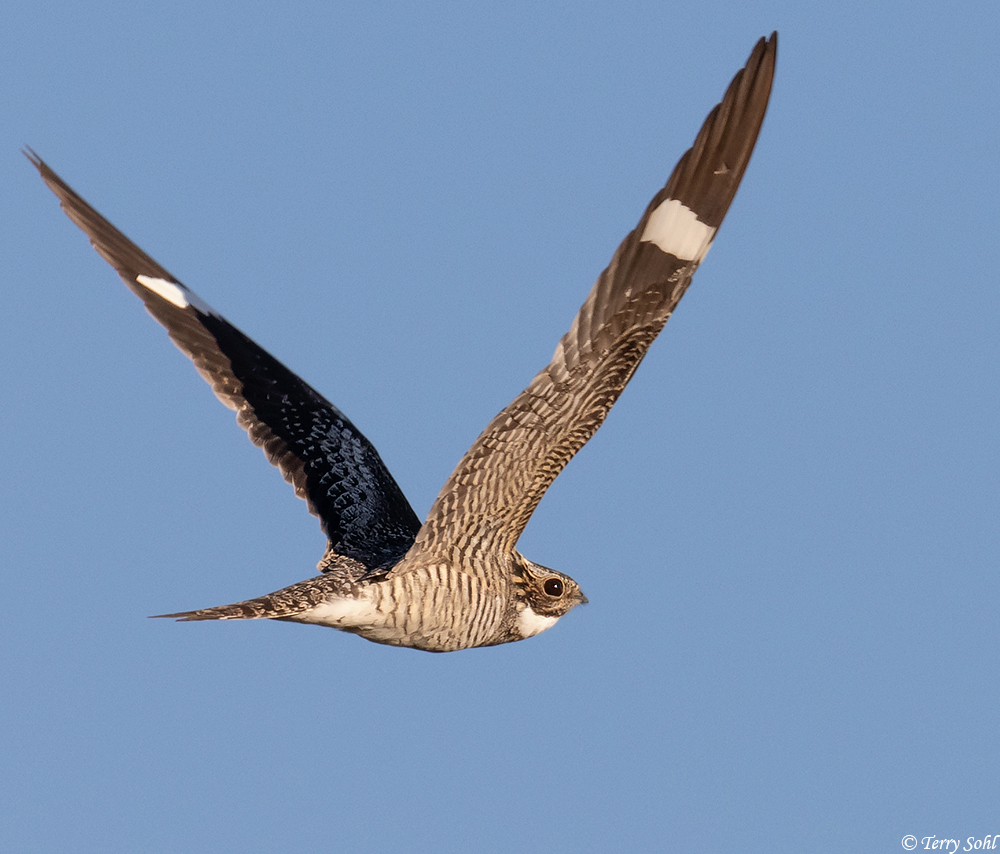

Southern populations of common nighthawks may produce chicks as early as May, while northern populations may not produce young until August. Males then land near the female, spreading and shaking their tail from side to side, displaying their white throat patch, and making a croaking noise. This display is accompanied by a “booming” noise made by the air rushing through the primary feathers of the male. They begin by flying 5 to 30 meters into the air and then diving steeply toward the ground, pulling up sharply about 2 meters above the ground. Males court females by displaying on the ground and in flight. There is little information available about the mating system of common nighthawks. Range elevation sea level (low) m (low) ft.These animals are found in the following types of habitat.( Poulin, et al., 1996 Stiles and Skutch, 1989) They probably prefer open areas for their wintering grounds. They have been seen migrating across wetlands, farmland, river valleys, open woodlands, and coastal dunes. Little is known about the migration routes or winter habitat of common nighthawks. Common nighthawks sometimes nest on flat gravel roofs of houses. Instead, they lay their eggs directly on the sand, gravel, leaves or bare rock that cover the ground. They will also use human habitats, such as logged or burned areas of forests, farm fields, and cities.Ĭommon nighthawks choose nest sites on the ground in open areas with some cover from grasses, shrubs, logs, or boulders. ( Poulin, et al., 1996)Ĭommon nighthawks breed in open habitats such coastal dunes and beaches, woodland clearings, grasslands, savannas, sagebrush plains, and open forests. Their winter distribution is less well known, but they are believed to range throughout middle South America in the lowlands east of the Andes. Average basal metabolic rate 0.4421 W AnAgeĬommon Nighthawks ( Chordeiles minor) breed throughout much of North America and parts of Central America.


Both sexes have bold barring on the chest and belly, though the light parts tend to be whiter on males and more buff-colored on females. Females do not have a tail band and are more buff-colored on the throat. Males have a white tail band near the tip of the tail and a white throat patch. They have a notched tail and long, slender, pointed wings with white patches on the primary feathers. They are cryptically colored in many shades of brown. Like other members of the Caprimulgidae family, they have very large mouths and eyes. They are 22 to 24 cm long and weigh 65 to 98 g. Common nighthawks are medium-sized birds.


 0 kommentar(er)
0 kommentar(er)
